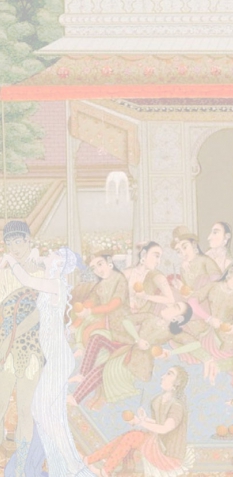
Illustrating cross-culturalism in Persian literature and art
This project is dedicated to a phenomenon, which can be identified as wandering iconography of wandering stories (visual intertextuality), whereby the literary images and their visual representation are borrowed, exchanged, influenced and emulated in different cultural traditions over the centuries, creating a unified image with many variations. Such iconography would be a result of a semantic merge, both literary and visual, of several genres, including interchange of secular and religious subjects. Classical examples of such an East-West universal phenomenon are a story of a flying king who in different traditions had different names (Semitic Nimrud, Iranian Kay Kavus, Hellenistic Alexander, Islamic Iskandar), or a story about a noble woman tragically falling in love with her slave/step-son (Biblical Wife of Potiphar, Iranian Sudaba, Hellenistic Phaedra, Qur’anic Zulaykha).
Persian literature, starting from its classical period, is characterised by a heavy use of tazmin (‘emulation’) when prominent poets feel themselves almost obliged to contribute with their own interpretation of a famous story to the multidimensional image of its protagonists. Thus an ancient romance of the Sasanian king Bahram V (Gur) and his slave girl received radically contradictory renditions by several masters, among whom are Firdausi, Nizami, Jami and Amir Khusrau Dihlavi whose aim was ‘to improve’ the version(s) of their predecessor(s). There are whole cycles of such narratives, which come from folklore, go through serious literary and philosophic metamorphoses due to secular, mainly court, as well as Sufi poetry, and return back to popular tradition, enriched with multifaceted reinterpretations of well-known images. Narratives of Iskandar or Zulaykha quite often overflow the border between Persian and Arabic, or Turkic literatures: Nava’i’s version of Iskandar’s change of personality is one of the most brilliant examples of this process.
During the centuries not only famous literateurs, literati and ordinary scribes responsible for producing more ‘updated’ versions of well-known literary works, but also artists illustrating such masterpieces, participated in their re-interpretation and adaptation to their individual taste, or to the fashion of the day. Sometimes the discrepancies between the text and its illustration could occur not due to the painters’ deliberate intention to ‘improve’ their predecessor’s style and ideas, but to the confusion caused in different cases by various factors: the similarities of the stories, emulating each other; already established and recycled iconographical clichés; and neglect of the text being illustrated.
